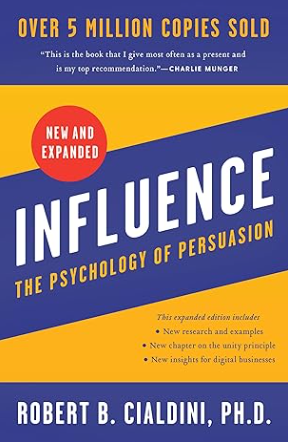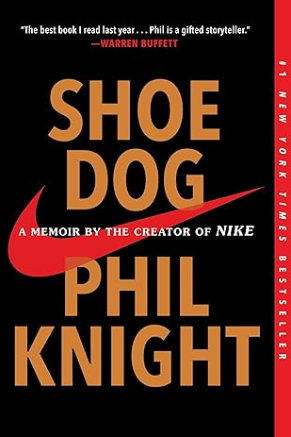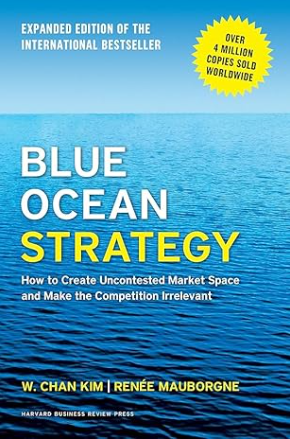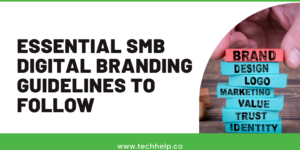E-Commerce has transformed how businesses operate, giving anyone with an internet connection the chance to build a profitable online store. While success depends on strategy, marketing, and execution, one of the best ways to fast-track growth is by learning from experts who have already mastered the game. The right books can save years of trial and error, providing clear frameworks for launching, scaling, and optimizing an online business.
In this guide, you’ll find a carefully selected list of the best books on ecommerce, covering everything from beginner fundamentals to advanced strategies in branding, marketing, and profitability.
1. The Lean Startup – Eric Ries

| Platform | Rating |
| Amazon | 4.5/5 |
| Goodreads | 4.0/5 |
Success in ecommerce isn’t just about launching a store, it’s about adapting quickly, testing ideas, and scaling efficiently. The Lean Startup by Eric Ries is a must-read for anyone serious about building a long-term ecommerce business.
Ries introduces the Build-Measure-Learn framework, which helps entrepreneurs test products, pivot when necessary, and refine their strategies based on customer feedback.
This method prevents business owners from wasting time and money on ideas that don’t work, making it especially useful for ecommerce startups operating on tight budgets. The book challenges traditional business planning, emphasizing agility and real-world testing instead of relying on assumptions.
Ecommerce entrepreneurs who apply The Lean Startup principles develop businesses that grow based on data-driven decisions rather than guesswork. It teaches how to launch a minimum viable product (MVP), gather real customer insights, and make continuous improvements, an approach that aligns perfectly with ecommerce, where trends shift rapidly.
Whether you’re testing new product categories, refining digital ads, or optimizing a Shopify store, Ries’ strategies ensure every move is backed by real market validation. For those looking to build an ecommerce brand that lasts, this book provides a clear, no-nonsense blueprint for sustainable growth.
Essential Lessons from The Lean Startup
- Build-Measure-Learn Cycle: Continuously test ideas, analyze data, and refine your approach.
- Minimum Viable Product (MVP): Launch quickly with a basic version to validate demand before scaling.
- Pivot vs. Persevere: Know when to adapt your strategy or double down on what works.
- Validated Learning: Base decisions on real customer feedback rather than assumptions.
- Efficient Scaling: Grow strategically instead of blindly expanding.
2. The E-Myth Revisited – Michael E. Gerber

| Platform | Rating |
| Amazon | 4.6/5 |
| Goodreads | 4.0/5 |
Running an ecommerce business is not just about selling products, it’s about building a system that works without you micromanaging every detail. The E-Myth Revisited by Michael Gerber exposes why so many small businesses fail: owners get trapped working in their business instead of working on it.
Instead of running a store like a never-ending job, Gerber teaches how to build systems, delegate tasks, and scale efficiently.
For ecommerce entrepreneurs, this means automating order fulfillment, streamlining customer support, and creating a business that thrives even when you’re not glued to your laptop. This shift in mindset is crucial for moving from daily firefighting to long-term strategic growth.
The book introduces the “Franchise Prototype” concept, encouraging business owners to treat their company like a well-oiled machine, even if they never plan to franchise. Whether you’re managing an Amazon FBA store, running a Shopify brand, or scaling a print-on-demand business, setting up repeatable systems is what separates struggling stores from profitable ones.
Instead of being the person who packs every order or replies to every email, Gerber urges business owners to build teams, document processes, and step into the role of a true entrepreneur. This book is a wake-up call for anyone stuck in the cycle of overwork, helping ecommerce sellers turn their side hustle into a real, scalable business.
Essential Lessons from The E-Myth Revisited
- Work on your business, not just in it: Stop being the bottleneck and start creating systems.
- Franchise Prototype: Build your business like a franchise, ensuring every task has a clear, repeatable process.
- Three Business Roles: Understand the difference between being a Technician (doing the work), a Manager (organizing), and an Entrepreneur (growing the vision).
- Delegation and Automation: Document workflows, train teams, and free yourself from day-to-day operations.
- Long-Term Scalability: Avoid burnout by designing a business that runs smoothly without your constant involvement.
3. Traffic Secrets – Russell Brunson

| Platform | Rating |
| Amazon | 4.8/5 |
| Goodreads | 4.3/5 |
An ecommerce store without traffic is just an expensive hobby. Traffic Secrets by Russell Brunson is the ultimate guide to getting more customers to your online store without relying solely on paid ads. Brunson, the founder of ClickFunnels, breaks down how to find your dream customers, grab their attention, and drive them to your website using strategic marketing.
For store owners struggling with low traffic or inconsistent sales, Brunson provides a predictable system for attracting buyers using content, email, and social media—without wasting money on ads that don’t convert.
The book focuses on organic and paid strategies, emphasizing audience building over one-time traffic spikes. Brunson explains how to tap into existing customer pools through partnerships, influencers, and viral marketing tactics. He also details evergreen traffic methods, ensuring your ecommerce store isn’t just dependent on social media trends or costly ad campaigns.
For online store owners tired of fluctuating traffic and unpredictable sales, Traffic Secrets delivers a roadmap to consistent, high-quality visitors who are ready to buy.
Essential Lessons from Traffic Secrets
- Dream Customer Strategy: Define and attract the ideal customer who is most likely to buy from you.
- Evergreen Traffic: Use SEO, blogging, and organic content to bring in customers long-term.
- Paid Ads that Work: Learn how to scale Facebook, Google, and YouTube ads without burning money.
- Leverage Partnerships & Influencers: Use existing audiences to drive immediate sales.
- Traffic Stacking: Build multiple traffic sources instead of relying on just one platform.
4. Building a StoryBrand – Donald Miller

| Platform | Rating |
| Amazon | 4.7/5 |
| Goodreads | 4.2/5 |
Most ecommerce stores struggle because their brand messaging is weak. Building a StoryBrand by Donald Miller teaches how to craft a clear, compelling message that turns visitors into loyal customers.
Many businesses make the mistake of talking too much about themselves instead of focusing on what their customers actually care about.
This book simplifies brand communication, helping ecommerce owners create a website, emails, and product descriptions that instantly connect with buyers. If your store isn’t converting well, it’s often because potential customers don’t fully understand why they should buy from you, Miller’s framework fixes that.
The core of the book is the StoryBrand Framework, a seven-part messaging formula that positions the customer as the hero and your brand as the guide. By clarifying your store’s messaging, you remove confusion, build trust faster, and increase conversions.
Whether you sell fashion, tech gadgets, or digital products, this book teaches how to craft a brand identity that customers remember and trust. Ecommerce is competitive, and the brands that communicate the clearest win, this book ensures yours is one of them.
Essential Lessons from Building a StoryBrand
- The Customer is the Hero: Stop making your brand the focus—make the customer the main character.
- The Clearer, the Better: Simplify your messaging to remove confusion and increase conversions.
- The StoryBrand Framework: Follow a seven-step process to position your brand as a trusted guide.
- Brand Voice Consistency: Ensure your website, emails, and ads all communicate the same message.
- Emotional Connection: Use storytelling to make your products more compelling and memorable.
5. Influence: The Psychology of Persuasion – Robert Cialdini

| Platform | Rating |
| Amazon | 4.7/5 |
| Goodreads | 4.2/5 |
Ecommerce success isn’t just about what you sell—it’s about how you sell it. Influence: The Psychology of Persuasion by Robert Cialdini is a deep dive into why people buy and how to ethically persuade them to take action.
This book breaks down the psychological triggers that make consumers say yes, making it essential for ecommerce entrepreneurs looking to increase conversions.
Cialdini’s research-backed principles explain how to build trust, create urgency, and encourage repeat purchases without coming off as pushy. Whether you’re optimizing product descriptions, crafting email campaigns, or designing ads, these persuasion tactics can dramatically increase sales.
The book outlines six universal principles of influence that apply directly to ecommerce. From social proof (why reviews and testimonials boost trust) to scarcity (why limited-time deals work so well), Cialdini reveals what motivates buyers to take action.
Smart ecommerce sellers use these principles in everything from landing pages to email sequences, ensuring every customer interaction subtly nudges them toward making a purchase. Influence isn’t just about selling, it’s about understanding human psychology to create offers that feel irresistible.
Essential Lessons from Influence
- Social Proof: Use reviews, testimonials, and case studies to increase buyer confidence.
- Scarcity & Urgency: Limited-time offers and low-stock alerts drive faster purchasing decisions.
- Reciprocity: Giving value (e.g., free samples, helpful content) makes customers feel inclined to buy.
- Authority: Establish credibility through expert endorsements, press mentions, or certifications.
- Commitment & Consistency: Small commitments (like signing up for emails) lead to bigger purchases over time.
6. Profit First – Mike Michalowicz

| Platform | Rating |
| Amazon | 4.8/5 |
| Goodreads | 4.3/5 |
Ecommerce businesses don’t fail because of bad products, they fail because of poor cash flow management. Profit First by Mike Michalowicz flips the traditional business finance model on its head, teaching entrepreneurs how to take profit first and manage expenses with what’s left.
Most online store owners get stuck in the cycle of reinvesting every dollar back into inventory, ads, and tools, only to realize there’s never enough left for actual profit.
This book introduces a simple but powerful financial system that guarantees you pay yourself first, keep your business healthy, and stop living sale to sale.
Michalowicz’s system forces financial discipline, ensuring ecommerce entrepreneurs don’t accidentally overspend on marketing or inventory. By dividing revenue into separate accounts, profit, owner’s pay, taxes, and operating expenses, you gain control over your cash flow without needing an accounting degree.
Ecommerce success isn’t just about revenue; it’s about keeping more of what you earn. If you’re tired of making sales but feeling broke, Profit First provides a clear path to sustainable financial health.
Essential Lessons from Profit First
- Take Profit First: Set aside profit before paying expenses to ensure long-term financial success.
- Separate Bank Accounts: Use multiple accounts to allocate money for profit, taxes, expenses, and owner’s pay.
- Spend Smarter: Work with a constrained budget instead of blindly reinvesting every dollar.
- Small Plates Approach: Limit spending by restricting the available cash in your expense account.
- Sustainable Growth: Build a business that’s profitable from day one instead of waiting for “someday” success.
7. The Personal MBA – Josh Kaufman

| Platform | Rating |
| Amazon | 4.7/5 |
| Goodreads | 4.1/5 |
Forget business school, everything you need to run a successful ecommerce business is inside The Personal MBA. Josh Kaufman condenses real-world business knowledge into one book, eliminating the need for overpriced degrees and unnecessary jargon.
This book covers pricing strategies, sales psychology, customer acquisition, and financial management, all of which are crucial for ecommerce success.
Kaufman doesn’t just explain concepts, he breaks down how to apply them in practical ways that benefit online business owners. Whether you’re launching a Shopify store, managing an Amazon FBA business, or selling digital products, this book gives you the business fundamentals you actually need.
One of the biggest takeaways is understanding value perception, why customers willingly pay premium prices for some products but hesitate with others. Kaufman also explains how to set profitable pricing models, ensuring that ecommerce entrepreneurs maximize profits without scaring away customers.
Instead of drowning in complex business theories, The Personal MBA provides straightforward, no-fluff insights that apply immediately to growing an online store. If you want business school knowledge without the student debt, this book delivers.
Essential Lessons from The Personal MBA
- Value Perception: Customers don’t just buy products, they buy perceived value, branding, and trust.
- Pricing Psychology: The right price point isn’t about cost, it’s about positioning and customer psychology.
- Customer Acquisition Strategies: Learn how to attract buyers efficiently without over-relying on ads.
- Financial Literacy: Master cash flow, profitability, and pricing to run a business that lasts.
- No-Nonsense Business Wisdom: Avoid academic fluff and focus on real-world strategies that drive success.
8. DotCom Secrets – Russell Brunson

| Platform | Rating |
| Amazon | 4.8/5 |
| Goodreads | 4.2/5 |
Ecommerce isn’t just about products, it’s about funnels. DotCom Secrets by Russell Brunson teaches how to turn cold visitors into paying customers through strategic sales funnels.
Unlike traditional ecommerce advice, which focuses on individual sales, this book shows how to build a system that nurtures leads, maximizes customer lifetime value, and automates revenue generation.
Brunson introduces tested funnel strategies, including tripwires, upsells, and email sequences that keep customers engaged long after their first purchase. If your store struggles with abandoned carts, low conversion rates, or inconsistent sales, this book provides a structured approach to fixing those problems.
The book also dives into storytelling and offer creation, explaining why most ecommerce stores fail to differentiate themselves. Instead of just listing products, Brunson teaches how to package offers in a way that makes customers feel like they’re getting an unbeatable deal.
This strategy is why top-performing Shopify brands and info-product businesses outperform competitors who rely solely on product listings. With DotCom Secrets, ecommerce entrepreneurs learn how to build a machine that consistently attracts, converts, and retains buyers.
Essential Lessons from DotCom Secrets
- Sales Funnels 101: Stop relying on one-time transactions, build systems that create repeat customers.
- Offer Creation: Package products with bonuses, bundles, and positioning that make them irresistible.
- Email & Retargeting Strategy: Capture leads and nurture them into buyers over time.
- Storytelling for Sales: Create brand narratives that customers emotionally connect with.
- Customer Lifetime Value: Focus on repeat sales and long-term customer relationships instead of chasing new buyers.
9. The One Page Marketing Plan – Allan Dib

| Platform | Rating |
| Amazon | 4.8/5 |
| Goodreads | 4.2/5 |
Marketing is what separates profitable ecommerce brands from those that struggle to make sales. The One Page Marketing Plan by Allan Dib simplifies marketing into a step-by-step framework that fits on a single page, making it perfect for ecommerce entrepreneurs who need a clear action plan.
Instead of getting lost in endless strategies, Dib focuses on how to attract, convert, and retain customers with a structured approach. Whether you’re running Facebook ads, writing emails, or optimizing your store, this book helps you build a marketing system that works consistently instead of relying on random promotions.
One of the most valuable insights in the book is understanding the three stages of customer engagement, before, during, and after the sale. Dib explains how to craft messaging that resonates with buyers, improve conversion rates, and increase repeat purchases.
Many ecommerce businesses struggle with inconsistent sales because they lack a predictable, repeatable marketing process, this book fixes that. If you’re tired of throwing money at ads without knowing why they work (or don’t), The One Page Marketing Plan gives you a clear roadmap to follow.
Essential Lessons from The One Page Marketing Plan
- Simple, Actionable Marketing: A clear framework to attract, convert, and retain customers.
- Before, During, After Model: Understand the three stages of customer engagement and optimize each.
- Customer-Centric Messaging: Craft marketing that resonates with your ideal buyers.
- Consistent Sales Strategy: Stop relying on random promotions—build a predictable system.
- Scalable Growth: Use repeatable tactics to grow sales without increasing workload.
10. 12 Months to $1 Million – Ryan Daniel Moran

| Platform | Rating |
| Amazon | 4.7/5 |
| Goodreads | 4.1/5 |
Scaling an ecommerce business to seven figures isn’t about luck, it’s about strategy, execution, and patience. 12 Months to $1 Million by Ryan Daniel Moran lays out a structured roadmap for entrepreneurs looking to build a million-dollar brand in a year.
Moran, a successful ecommerce entrepreneur, breaks down product selection, brand building, and long-term scaling into manageable phases. Instead of chasing short-term wins, he emphasizes how to create a business with lasting value, whether through Shopify, Amazon FBA, or direct-to-consumer models.
The book follows a three-phase process: First, find a winning product and generate your first $10,000 in revenue. Next, scale to six figures by refining marketing and brand positioning. Finally, turn a six-figure store into a seven-figure brand by reinvesting in inventory, ads, and customer experience.
Moran emphasizes profitability over revenue, ensuring business owners don’t fall into the trap of high sales with low margins. If you’re serious about ecommerce growth, this book provides a realistic, actionable blueprint for hitting $1M in revenue.
Essential Lessons from 12 Months to $1 Million
- Three-Phase Scaling Strategy: Start with a small win, grow to six figures, then scale to seven.
- Product Selection is Key: Focus on products with long-term potential instead of trend-based items.
- Brand Building Over Dropshipping: The goal is to create a sustainable brand, not just sell products.
- Profitability First: Prioritize margins and reinvest wisely for long-term success.
- Step-by-Step Growth Plan: Follow a structured approach instead of guessing your way to $1M.
11. Contagious: How to Build Word of Mouth in the Digital Age – Jonah Berger
| Platform | Rating |
| Amazon | 4.7/5 |
| Goodreads | 4.1/5 |
Ecommerce success isn’t just about ads, it’s about getting people to talk about your brand. Contagious by Jonah Berger explains why some products and ideas go viral, while others get ignored. Using real-world examples, Berger reveals six key principles that make content, products, and brands more shareable.
In a crowded online market, word-of-mouth marketing can be the difference between a brand that thrives and one that disappears. This book helps ecommerce entrepreneurs understand how to create marketing that spreads organically, reducing reliance on paid advertising.
Berger introduces the STEPPS framework, which breaks down how social influence, emotional triggers, and storytelling drive engagement. Brands like Apple and Tesla don’t just sell products, they sell ideas that people want to share.
Ecommerce businesses can apply these principles to craft viral product descriptions, high-converting ad copy, and brand experiences that customers talk about. If you want more organic sales without increasing your ad spend, Contagious shows how to make your store, products, and content naturally spread.
Essential Lessons from Contagious
- STEPPS Framework: Use Social Currency, Triggers, Emotion, Public Visibility, Practical Value, and Stories to create shareable content.
- Word-of-Mouth Strategy: Design marketing that people naturally want to share.
- Emotional Marketing: Create content that sparks strong reactions and gets engagement.
- The Power of Triggers: Align your products with everyday moments that remind customers to buy.
- Organic Virality: Reduce dependency on paid ads by leveraging social influence and branding.
12. $100M Offers – Alex Hormozi

| Platform | Rating |
| Amazon | 4.9/5 |
| Goodreads | 4.6/5 |
Ecommerce isn’t just about having great products, it’s about creating offers so good customers feel stupid saying no. $100M Offers by Alex Hormozi teaches entrepreneurs how to craft irresistible offers that increase sales without lowering prices. Many ecommerce businesses compete on price, slashing margins to attract buyers, but Hormozi flips this thinking.
He explains how to add value, position products correctly, and create offers that make competitors irrelevant. This book is a game-changer for store owners struggling with conversion rates or battling in price wars.
The book introduces the “Value Equation”, breaking down how to increase the perceived worth of a product while reducing friction for buyers. Hormozi also teaches how to bundle products, add bonuses, and create guarantees that remove objections.
If your ecommerce store is attracting visitors but struggling with conversions, $100M Offers provides a clear formula for making your products irresistible.
Essential Lessons from $100M Offers
- The Value Equation: Increase perceived value without lowering prices.
- Offer Stacking: Add bonuses, guarantees, and exclusivity to make products irresistible.
- Framing & Positioning: Sell the transformation, not just the product.
- Breaking Customer Objections: Identify and remove purchase hesitations.
- Scaling Profits: Charge premium prices by offering more value, not discounts.
13. Buy Then Build – Walker Deibel

| Platform | Rating |
| Amazon | 4.8/5 |
| Goodreads | 4.2/5 |
Starting an ecommerce store from scratch takes time, effort, and a lot of trial and error. Buy Then Build by Walker Deibel presents a smarter alternative, acquiring an existing ecommerce business instead of building one from zero.
Many entrepreneurs overlook this approach, assuming buying a business is only for large corporations, but Deibel breaks down how small business owners can purchase profitable ecommerce brands, scale them, and create wealth faster.
Instead of struggling with product validation, traffic generation, and brand awareness, this book teaches how to step into an existing business with revenue, customers, and systems already in place.
Deibel explains how to identify high-potential businesses, secure funding, and negotiate deals that lead to long-term success. Ecommerce acquisitions allow entrepreneurs to bypass the most challenging early-stage hurdles and focus on optimization, expansion, and profitability.
He also emphasizes how to spot undervalued brands with hidden growth potential, making this book an essential read for entrepreneurs looking to scale faster. If you’re tired of slow growth and want a direct path to owning a thriving ecommerce brand, Buy Then Build provides a blueprint for entering the market strategically.
Essential Lessons from Buy Then Build
- Why Buying > Starting: Skip the early struggles by acquiring a profitable store.
- How to Evaluate Businesses: Identify undervalued ecommerce brands with growth potential.
- Funding & Financing: Use loans, investors, or creative financing to buy businesses.
- Scaling After Acquisition: Optimize operations, marketing, and product offerings post-purchase.
- Exit Strategy Planning: Build an ecommerce brand with long-term resale value.
14. Shoe Dog – Phil Knight

| Platform | Rating |
| Amazon | 4.8/5 |
| Goodreads | 4.5/5 |
A successful ecommerce business isn’t just about selling, it’s about building a brand people believe in. Shoe Dog by Phil Knight, the founder of Nike, tells the story of how he built one of the most recognized brands in history from nothing.
Unlike many business books that focus on strategies and frameworks, this one provides raw, unfiltered insights into what it takes to create a lasting, global brand. From funding struggles and production nightmares to breakthrough marketing strategies, Knight’s journey is packed with lessons that apply to anyone building an ecommerce business.
The book highlights the importance of vision, risk-taking, and persistence, showing that successful brands don’t just sell products, they sell a story, a lifestyle, and a belief system. Nike didn’t become a billion-dollar company because it had great shoes; it became iconic because it positioned itself as a movement.
Ecommerce entrepreneurs can apply these lessons by focusing on differentiation, storytelling, and long-term brand loyalty. If you’re serious about building a brand that customers connect with, Shoe Dog offers a behind-the-scenes look at what it takes to create something bigger than just a business.
Essential Lessons from Shoe Dog
- Brand Storytelling: People connect with brands that have a compelling origin story.
- Resilience & Grit: Business success requires persistence through setbacks.
- Customer Loyalty: Build a movement around your brand, not just a product line.
- Global Brand Positioning: How to turn a niche idea into an internationally recognized company.
- Risk & Innovation: Big success comes from taking bold but calculated risks.
15. The Million Dollar, One-Person Business – Elaine Pofeldt

| Platform | Rating |
| Amazon | 4.6/5 |
| Goodreads | 4.0/5 |
Not all ecommerce entrepreneurs want to build massive companies with employees, investors, and endless overhead. The Million Dollar, One-Person Business by Elaine Pofeldt proves that you can scale an online business to seven figures without hiring a full team.
Many successful ecommerce businesses operate with just one person, leveraging automation, freelancers, and smart systems to generate high revenue while keeping operations lean.
This book showcases real entrepreneurs who built million-dollar brands without sacrificing flexibility or freedom, making it perfect for those who want financial success without corporate complexity.
Pofeldt explains which ecommerce models work best for solopreneurs, including dropshipping, digital products, and subscription businesses. She also breaks down how to outsource non-essential tasks, automate workflows, and focus only on high-value activities.
The biggest takeaway is that success isn’t about how many people you hire, it’s about how effectively you use systems and resources. If you’re looking to scale your ecommerce business without managing employees or increasing stress, this book provides a step-by-step guide to doing more with less.
Essential Lessons from The Million Dollar, One-Person Business
- Scale Without a Team: Use automation and outsourcing to grow revenue efficiently.
- Leverage Smart Systems: Focus on processes that maximize time and profits.
- High-Profit Ecommerce Models: Choose businesses that generate income without requiring large teams.
- Work Smarter, Not Harder: Free up time by eliminating unnecessary tasks.
- Real Success Stories: Learn from solopreneurs who built seven-figure brands independently.
16. The 4-Hour Workweek – Tim Ferriss

| Platform | Rating |
| Amazon | 4.5/5 |
| Goodreads | 3.9/5 |
Ecommerce is one of the best business models for creating freedom, but many store owners trap themselves in a cycle of endless work. The 4-Hour Workweek by Tim Ferriss challenges the idea that success requires working long hours and instead teaches how to automate, delegate, and scale an online business while reclaiming personal time.
Ferriss built a profitable ecommerce business selling supplements, and his insights on outsourcing, passive income, and time optimization make this book essential for entrepreneurs looking to create a business that runs without them.
The book focuses on lifestyle design, building a business that supports your ideal life instead of consuming it. Ferriss introduces strategies for hiring virtual assistants, automating repetitive tasks, and using geo-arbitrage to reduce expenses while maximizing profit.
Ecommerce entrepreneurs often get caught up in daily operations, customer service, and marketing, but The 4-Hour Workweek proves that a well-structured business doesn’t need constant hands-on management. If your goal is to scale an ecommerce store while having more freedom, this book provides a step-by-step blueprint for doing exactly that.
Essential Lessons from The 4-Hour Workweek
- Automation & Delegation: Eliminate tasks that don’t require your direct involvement.
- The 80/20 Rule: Focus on the 20% of work that generates 80% of results.
- Remote Business Optimization: Run a business from anywhere with the right systems in place.
- Eliminate Time Wasters: Cut unnecessary meetings, emails, and repetitive work.
- Lifestyle-First Business Model: Build an ecommerce store that supports your ideal lifestyle.
17. Blue Ocean Strategy – W. Chan Kim & Renée Mauborgne

| Platform | Rating |
| Amazon | 4.6/5 |
| Goodreads | 3.9/5 |
Ecommerce is fiercely competitive, and many brands struggle because they compete in saturated markets with no real differentiation. Blue Ocean Strategy by W. Chan Kim and Renée Mauborgne teach how to escape brutal competition by creating unique, uncontested markets, the “blue ocean”, instead of fighting over scraps in a “red ocean” full of competitors.
Instead of relying on aggressive pricing, discounts, or minor product variations, this book explains how to create a category-defining brand that makes competition irrelevant.
The core idea is value innovation, offering something so unique and valuable that customers stop comparing prices and competitors altogether. Many successful ecommerce brands, like Warby Parker (direct-to-consumer eyewear) and Casper (bed-in-a-box mattresses), dominated their markets by applying these principles.
The book provides a framework for identifying opportunities, refining brand positioning, and building an ecommerce business that stands out. If you’re tired of competing on price and want to create a brand that owns its market, Blue Ocean Strategy is a must-read.
Essential Lessons from Blue Ocean Strategy
- Create a Unique Market: Stop competing—build a category of your own.
- Value Innovation: Differentiate by offering unique, high-value products or services.
- Break Free from Price Wars: Competing on price is a race to the bottom—focus on unique value instead.
- Strategic Differentiation: Position your ecommerce store as the leader in a new market.
- Long-Term Brand Dominance: Build a business that customers can’t compare to anything else.
18. Crushing It! – Gary Vaynerchuk

| Platform | Rating |
| Amazon | 4.8/5 |
| Goodreads | 4.2/5 |
Branding is everything in ecommerce, and Crushing It! by Gary Vaynerchuk explains how to use social media, personal branding, and storytelling to dominate the market. Many ecommerce stores struggle because they rely solely on paid ads, but Vaynerchuk emphasizes organic brand building, customer engagement, and content-driven marketing as the keys to long-term success.
This book is packed with case studies of entrepreneurs who leveraged Instagram, YouTube, TikTok, and podcasts to build highly profitable brands without massive advertising budgets.
Vaynerchuk breaks down platform-specific strategies, showing how to build an audience that trusts your brand and actively promotes it for you. He also highlights why authenticity matters more than perfect marketing, customers connect with brands that have a personality, a mission, and a relatable story.
Ecommerce entrepreneurs who want to create a loyal following, generate free traffic, and build a lasting brand will find Crushing It! invaluable. This book isn’t just about ecommerce, it’s about becoming a brand customers love and advocate for.
Essential Lessons from Crushing It!
- Authenticity Wins: Be real, engage with customers, and build a brand personality.
- Leverage Social Media: Use Instagram, TikTok, and YouTube to drive sales organically.
- Content Marketing Mastery: Create value-driven content that builds brand authority.
- Personal Branding for Ecommerce: Stand out by putting a face behind your store.
- Community-Driven Growth: Customers should feel connected to your brand, not just your products.
19. The Everything Store – Brad Stone

| Platform | Rating |
| Amazon | 4.5/5 |
| Goodreads | 4.0/5 |
Ecommerce today wouldn’t exist without Amazon, and The Everything Store by Brad Stone provides a behind-the-scenes look at how Jeff Bezos built the most dominant online business in history. This book isn’t just about Amazon, it’s about scaling an ecommerce business with relentless innovation, customer obsession, and operational efficiency.
Stone details Amazon’s aggressive expansion, supply chain mastery, and its approach to pricing, logistics, and customer service, providing valuable lessons for anyone running an online store.
One of the biggest takeaways from this book is how Amazon transformed customer expectations, fast shipping, personalized recommendations, and frictionless checkout aren’t just nice features anymore; they’re the standard. Ecommerce entrepreneurs can learn how to optimize logistics, streamline operations, and improve customer experience by studying Amazon’s playbook.
The book also explores Bezos’ mindset, leadership style, and decision-making process, revealing how strategic long-term thinking can create a dominant brand. If you want to build an ecommerce business that scales efficiently and stays ahead of the competition, The Everything Store offers an invaluable roadmap.
Essential Lessons from The Everything Store
- Customer Obsession: Prioritize customer experience over short-term profits.
- Operational Efficiency: Optimize supply chain, fulfillment, and logistics for maximum scale.
- Long-Term Thinking: Invest in growth strategies that pay off over time, not just quick wins.
- Relentless Innovation: Always look for ways to disrupt and improve.
- Competitive Differentiation: Set your ecommerce store apart with superior service and execution.
20. Made to Stick – Chip Heath & Dan Heath

| Platform | Rating |
| Amazon | 4.7/5 |
| Goodreads | 4.1/5 |
A great ecommerce product isn’t enough, it needs a message that grabs attention and stays in customers’ minds. Made to Stick by Chip Heath and Dan Heath explores why some ideas, brands, and messages become unforgettable while others are forgotten instantly.
This book is a game-changer for ecommerce entrepreneurs who want to create powerful brand messaging, viral marketing campaigns, and high-converting product descriptions. Instead of just listing features, Made to Stick teaches how to craft compelling narratives that make customers pay attention.
The book introduces the SUCCESs framework (Simple, Unexpected, Concrete, Credible, Emotional, Stories), explaining how to apply these principles to branding, marketing, and product storytelling. Many ecommerce stores struggle because their messaging is too generic, too complicated, or doesn’t create an emotional connection.
Heath & Heath explain how to create sticky, memorable messages that customers resonate with, leading to stronger brand loyalty and increased conversions. If your marketing and branding feel forgettable, Made to Stick will transform how you communicate with your audience.
Essential Lessons from Made to Stick
- The SUCCESS Framework: Simple, Unexpected, Concrete, Credible, Emotional, and Stories, keys to making messages stick.
- Emotional Storytelling: People remember emotions, not just facts—use stories to connect with customers.
- Clear, Memorable Branding: Craft a message that customers instantly understand and remember.
- Make Products Stand Out: Use unexpected elements to grab attention.
- Long-Term Brand Loyalty: The most successful ecommerce brands build emotional connections with their audience.
Final Take: Which Book Should You Start With?
Success in ecommerce comes down to strategy, execution, and the right mindset, these books provide battle-tested insights from industry leaders who’ve built, scaled, and optimized online businesses.
Whether you need help with traffic, branding, automation, or profitability, this list offers actionable knowledge tailored to every stage of your journey. Choose a book that aligns with your current challenges, apply its lessons, and start building an ecommerce business that thrives. 🚀
Frequently Asked Questions
How do I choose the best ecommerce book for my needs?
The best ecommerce book depends on your business stage and current challenges. If you’re starting out, focus on fundamentals like business models and marketing. If you’re scaling, books on branding, automation, or financial management will help you optimize and grow sustainably.
Are books enough to succeed in ecommerce?
Books provide proven strategies and frameworks, but action is what drives success. Use books as a roadmap, then test their lessons in real-world ecommerce scenarios. Combining learning with execution helps you adapt, refine, and develop a business that truly works.
What is the most overlooked aspect of ecommerce success?
Many entrepreneurs focus too much on products and ads while neglecting customer experience and retention. A seamless shopping experience, strong brand identity, and loyalty-driven marketing are key to long-term success. Brands that prioritize repeat customers and relationships often outperform those chasing one-time sales.
Related:
- The Ultimate List of Best Business Books For Growth and Success
- Best Digital Marketing Books to Boost Your Business
- 21 Greatest Sales Books That All Entrepreneurs Should Read

We empower people to succeed through information and essential services. Do you need help with something? Contact Us.
Want a heads-up once a week whenever a new article drops?








